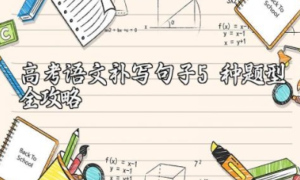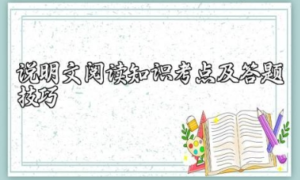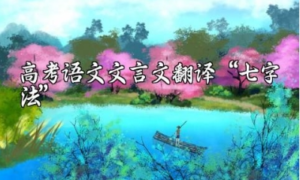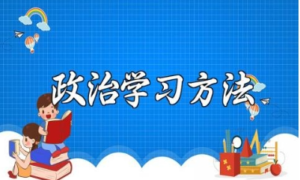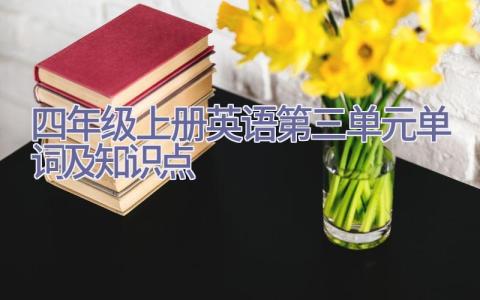
四年级上册英语第三单元的知识点学习已经结束了,那么关于四年级上册第四单元的知识点有哪些呢?以下是小编准备的一些四年级上册英语第三单元单词及知识点,仅供参考。
四年级上册英语第三单元单词
long hair:[l??][h??] 长头发
short hair:[??:t][h??] 短头发
thin:[θin] 瘦的
strong:[str??] 健壮的
quiet:[‘kwai?t] 安静的
friend(s):[frend]朋友(复数)
Chinese 中国的
like:[laik] 喜欢
his:[hiz] 他的
photo:[‘f?ut?u] 照片
he’s=he ishas (他/她)有
name:[neim] 名字
he:[hi:] 他
teacher:[‘ti:t??] 教师
student:[‘stju:d?nt] 学生
music:[‘mju:zik] 音乐
science:[‘sai?ns] 科学
sports:[sp?:ts] 体育运动
computer game:[k?m’pju:t?][geim] 电脑游戏
painting:[‘peinti?] 绘画
she’s=she is her 她的
you’re=you are
she:[?i:] 她
right:[rait] 对的;正确的
boy :[b?i]男孩
girl:[g?:l] 女孩
friend:[frend] 朋友
四年级上册英语第三单元
知识点
一、核心词汇
1.常见描述人外貌和性格特征的单词:strong强壮的friendly友好的quiet安静的
2.常见身体部位单词及短语:hair头发longhair长头发shorthair短头发
3.常见物品名称:shoe鞋glasses眼镜brown shoes棕色的鞋blue glasses蓝色的眼镜a green bag一个绿色的书包
二、了解词汇
1.常见物品名称:hat(常指带檐的)帽子
2.其他:his他的or或者right正确的;对的her她的
三、核心句型
1.—What’shisname?他叫什么名字?
—HisnameisZhangPeng.他叫张鹏。
解读:此句型用来询问他人的姓名。his意为“他的”。
拓展:询问“她叫什么名字?”应用“What’shername?”回答时说“Hernameis…”。
2.He’stallandstrong.他又高又壮。
解读:此句型用来描述他人的性格或外貌特征。
拓展:he’s/she’s分别是heis和sheis的缩写形式。其后的形容词还可以是short,thin,friendly,quiet,cute,good等。
3.Hehasglassesandhisshoesareblue.他戴眼镜,穿蓝色鞋子。
解读:此句型也可用来描述他人的外貌特征。has是have的第三人称单数形式。
拓展:若要描述第三人称“她”,则可以用句型“She’s…Shehas…”。
4.—Whoishe?他是谁?
—HeisWuYifan.他是吴凡。
解读:此句型用来询问他人的姓名或身份。
拓展:询问“她是谁?”应用“Whoisshe?”,回答时说“Sheis…”。
四、了解句型
1.He’sveryfriendly.他很友好。
解读:friend意为“朋友”,后加ly变为形容词,意为“友好的”。
2.She’sacute,cutegirl.她是一个很可爱很可爱的女孩。
3.She’squietandfriendly.她既安静又友好。
4.—IsheWufan?他是吴凡吗?
—Yes.You’reright.是的。你答对了。
5.Myfriendhasblueglasses.我的朋友戴着蓝色的眼镜。
6.Heisshortandthin.他又矮又瘦。
7.Ican’tpullitup.我拔不出来。
解读:pull…up意为“把……拉上来;把……拔出来”。
8.Pleasehelpme.请帮帮我。
解读:please后面要接动词原形。
四年级英语上册第三单元测试题
一、选出你听到的单词:5%
( ) 1. a. driver b. dive c. draw
( ) 2. a. cold b. old c. fold
( ) 3. a. pear b. bear c. ear
( ) 4. a. waiter b. waitress c. brave
( ) 5. a. bed b. bread c. red
二、选出你听到的句子:5%
( ) 1. A. The lion is on the grass.
B. The dog is on the grass.
( ) 2. A. The bear likes the car.
B. The dog doesn‘t like the car.
( ) 3. A. She has a balloon.
B. He has a kite.
( ) 4. A. The ball is on the box.
B. The ball is in the box.
( ) 5. A. She is a nurse.
B. He is a dentist.
三、选出听到的单词完成句子:5%
( ) 1. —- are you? —-Fine, thanks.
a. How b. Who c. What
( ) 2. Supergirl can’t .
a. ride b. write c. fly
( ) 3. It‘s birthday. Happy birthday.
a. my b. your c. her
( ) 4. —-Do you like ?—-Yes, I do.
a. lizards b. monkeys c. giraffes
( ) 5. —-Can you ?—-No, I can’t.
a. How b. draw c. fold
四、听问句,选答句:5%
( ) 1. a. Yes, it is. b. Yes, she is.
( ) 2. a. It‘s Ben’s. b. It‘s Ben.
( ) 3. a. I am. b. I have.
( ) 4. a. She’s a nurse. b. He‘s a policeman.
( ) 5. a. He likes oranges. b. He likes orange.
五、判断“T or F”:10%
( ) 1. Sam is two years old.
( ) 2. The monkey is happy.
( ) 3. It’s a pear.
( ) 4. Sam likes grey.
( ) 5. Danny‘s skateboard is old.
六、听短文填入所缺单词:10%
Mark is years old. His father is a . mother is a . He has two friends, Ben and Eddie. Ben likes . Eddie cats. Look, Mark is and hungry. But hasn’t got and food. He is .
Part II Reading Test (60%)
一、正确抄写下列单词和句子:10%
playground telephone waitress
Is this your pen, Ben Yes, it is my pen.
二、写出反义词:5%
hungry—- yes—- happy—-
new—- long—-
三、填空:5%
—-What can you see in the mirror?
—-I can see two (ear), two brown (eyes), a small red (mouth), two big (foot). But I can‘t see my (toe).
四、选择:10%
( ) 1. Look the tiger. It’s strong.
a. to b. at c. in
( ) 2. I‘m a new girl. You can call kally.
a. your b. my c. me
( ) 3. Bob two small eyes.
a. have b. has c. is
( ) 4. dog is what?
a. Whose b. Who c. Where
( ) 5. I like cats.
a. doesn’t b. not c. don‘t
( ) 6. The mouse is brave. teeth are shape.
a. He b. His c. She
( ) 7. You thirsty. I happy.
a. is…am b. are…am c. am…are
( ) 8. The ladybird is the toilet.
a. at b. to c. in
( ) 9. —-What your father?—-He’s a postman.
a. is b. has c. are
( )10. —- Sam like your chair?
—-No, he .
a. Do…does b.Does…doesn‘t c. Do…doesn’t
五、选择填空:10%
policemen firemen
1. Telephone 119, and come.
2. Telephone 110, and come.
I me my
1. name is Zhang Ling.
2. You can call John.
3. am nine years old.
have has
1. a new skateboard.
2. He a old ball.
am is are
1. I in the classroom.
2. We on the playground.
3. He in the toilet.
六、完成句子:10%
1. That‘s Ben’s block.
Is ? Yes, .
2. Do you like dogs? No, .
3. How do you feel? (快乐).
4. is she ? ten.
5. What does your father do?
(教师).
6. dive ? No, I can‘t.
7. I’m happy. (否定句)
.
七、读短文判断(T or F):5%
Mike and Tom are good friends. Tom likes cats. Mike likes dogs. They all like riding bicycles. Tom can jump and swim. Mike can sing. Tom‘s mother is a teacher. Mike’s mother is a doctor.
1. ( ) Tom doesn‘t like cats. Mike likes cats.
2. ( ) They like riding bicycles.
3. ( ) Tom can jump and sing.
4. ( ) Tom’s father is a teacher.
5. ( ) They are good friends.
八、作文:5%
照样子写一段关于你的好朋友的短文。
eg: My friend is a boy.
He‘s ten.
He’s short .
He has short hair.
He has a new ball.
四年级英语上册教案
教材分析:
本模块的主题是Food. 主要语言功能是要求学生通过学习谈论有关食物的话题。它承接第二册已经学习过三餐的基础上,继续展开话题,谈论Do you want……? 主要学习Do you want some rice? Yes, please. No, thank you. Have you got chopsticks in English? 等几个句子。从食物谈到中西方食文化的一些差异。题材非常生活化,是学生感兴趣的话题之一,使学生能学以致用。本课在这一册中是第一单元,地位至关重要,承上启下,不仅要对上学期的知识进行复习,还要使学生对新学期的学习充满兴趣。
学情分析:
学生对吃的方面都十分敢兴趣,所以本节课比较吸引学生,引起学生兴趣。对于学生来说学习英语的时间很少,所以关于单词的记忆需要采取在课堂上多做些复习,保证学生至少有些记忆。目前主要要求学生会读会所以听读方面操练比较多,而写方面少些,导致学生听会说中文,但看的时候就有些记不起来,所以这方面需要加强。
教学目标:
能听说读写单词:Chinese、fast food、chopsticks、difficult 、want、make,some
能使用句子:Do you want some…?且能做出正确回答Yes,please.No,thank you.
掌握并能运用句型:Do you want some…?
教学重点:
掌握句型Do you want some…?Yes,please.No,thank you.并能就食物的选择向他人提问或回答他人。
教学难点:
chopsticks、difficult的发音及新句型的运用。
教学准备:
单词卡片,录音磁带,录音机。
教学过程:
1、导入:通过出示一些以前学过的事物方面的图片,引导学生说出其的英文,让学生即能复习知识又能被诱人的美食图片所吸引,提高学习兴趣。
(设计意图:提高学生兴趣,集中学生注意力)
2、引出今天课文的新单词,带领学生读新单词。
(设计意图:通过旧知识的学习,很好的.过渡到新知识学习)
3、板书今天要学习的句型 Do you want some rice? Yes please. No,thank you.然后把准备好的食物卡片贴在黑板上,分组进行用出示的事物卡片代替rice说一说。
(突出今天的重点句子,简洁明了)
4、学习课文,听录音让学生跟读,然后在有老师领读,带领学生了解课文内容。
(培养学生阅读能力,提高听力能力)
5、小游戏,把事物卡片拿下来分发给每个小组的第一个学生,然后以击鼓传花的方式把食物卡片在小组中传递,当鼓声停时卡片在谁手上就用Do you want some …?提问小组队员,被提问的用Yes please. No,thank you.来做选择回答。
(让学生学习兴趣达到高潮,通过游戏掌握今天的重点句子。并进行小组比赛,让学生评出哪个组表现最好,说得最流利,小组成员配合最积极大声。)
6、最后在复习下单词和句子。
(巩固今天的内容)
(请学生谈谈自己这节课学了什么新知识,老师以鼓励表扬为主)


